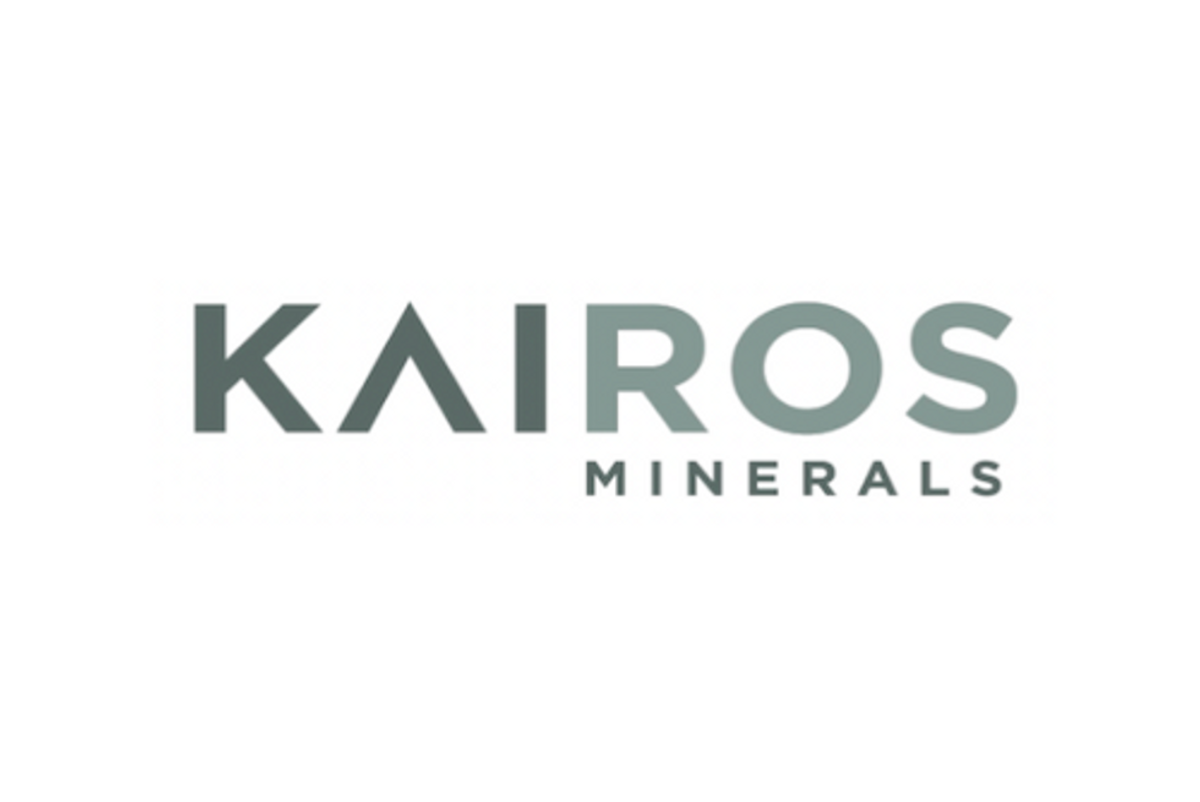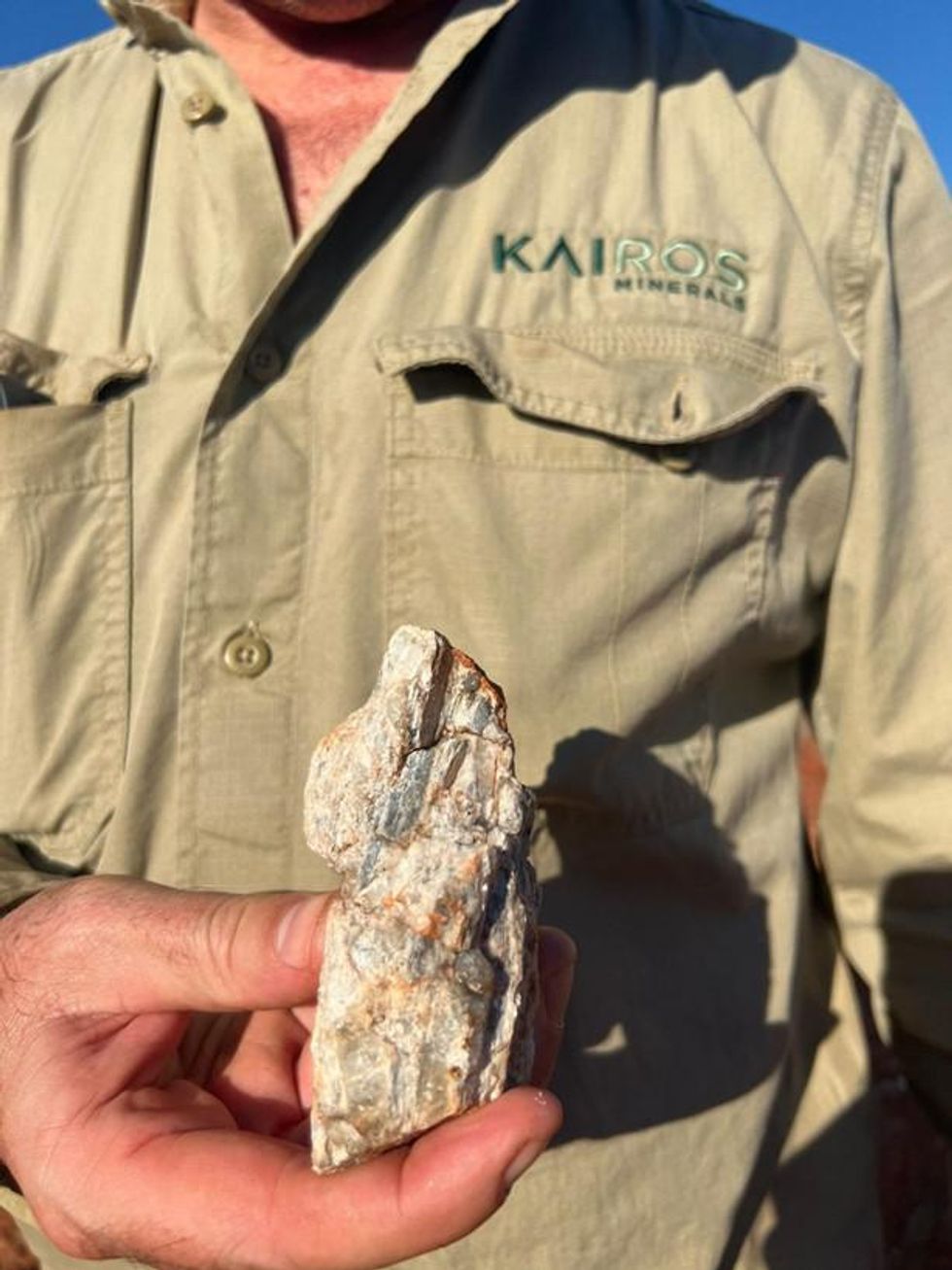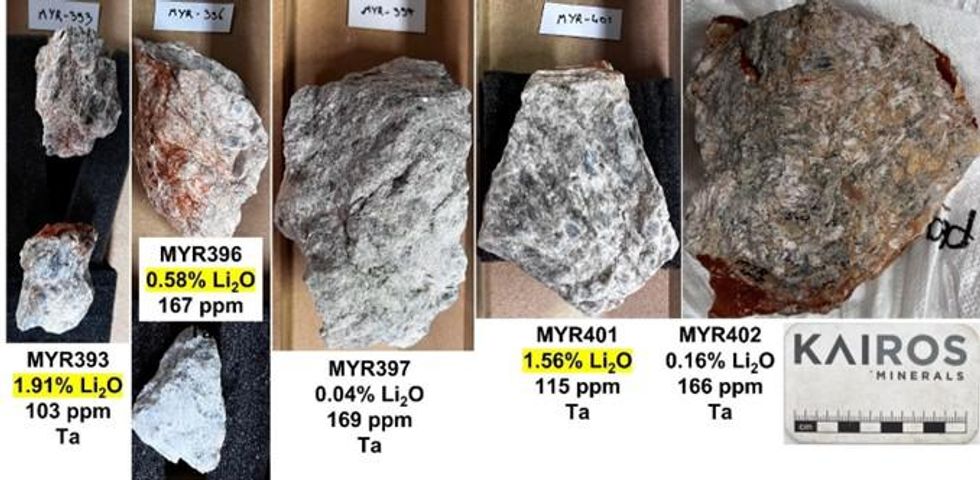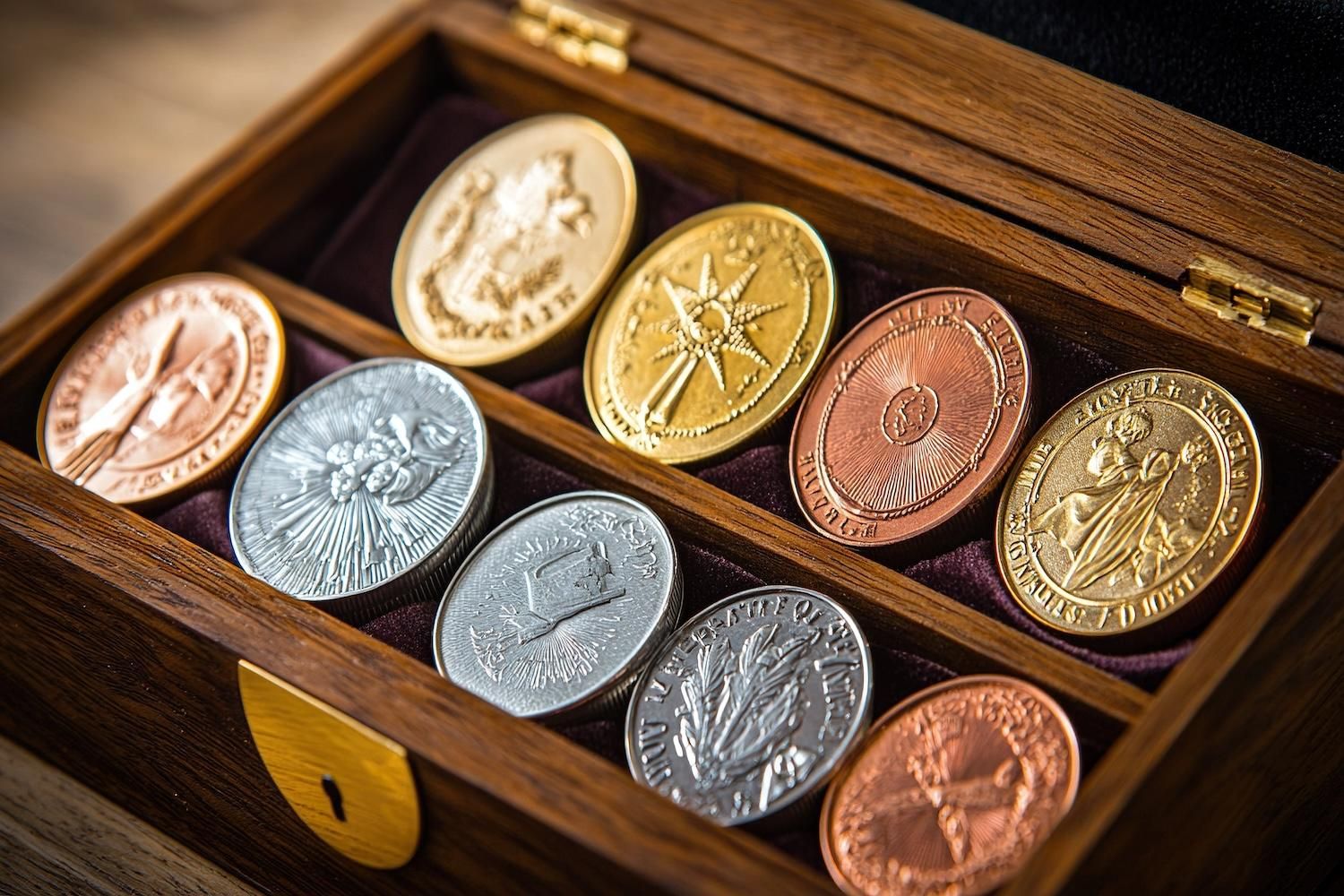
- NORTH AMERICA EDITIONAustraliaNorth AmericaWorld
July 31, 2022
Results of up to 1.91% Li2O just 4km from Pilbara Minerals’ Pilgangoora lithium-tantalum mine; Drilling being planned for September
Kairos Managing Director, Dr Peter Turner said: “The high-grade lithium results, combined with the confirmation of spodumene mineralogy, is a very exciting development.
Highlights
- Five pegmatite samples from the Lucky Sump prospect at Mt York have returned exceptional assays including:
- 1.91% Li2O & 103 ppm Ta (MYR393)
- 1.56% Li2O & 115 ppm Ta (MYR401)
- 0.58% Li2O & 167 ppm Ta (MYR396)
- The spodumene-bearing pegmatite samples were discovered during routine earthmoving activities next to the flagship Mt York gold deposit
- The spodumene pegmatites are part of a larger interpreted dyke swarm at Mt York
- Planning underway to RC drill-test large area of Lucky Sump
“In light of these exceptional results, we plan to expedite planning to drill all of Lucky Sump. We intend to test the entire interpreted pegmatite dyke swarm, which is under cover, with the first RC drilling anticipated in September.
“We are in a Tier 1 destination for spodumene pegmatite projects with two world-class Li-Ta deposits (ASX:PLS, ASX:MRL) in the neighbourhood and we have demonstrated that we have the right fertile geology for significant Lithium-Caesium-Tantalum (LCT) pegmatite discoveries”.
Figure 1. Kairos Geologist Campbell Watts holding a piece of spodumene-bearing pegmatite (MYR393 – 1.91% Li2O) discovered at ‘Lucky Sump’ during routine earth moving activities.
Five samples of pegmatites that were analysed by hyperspectral and XRD methods confirming the presence of spodumene mineralogy (see KAI Announcement dated 12 July 2022), were submitted to NAGROM Laboratories in Perth for chemical analysis. Photographs of the pegmatites are shown in Figure 2.
The samples were crushed and pulverised and a 200g subsample selected for Na-peroxide fusion with hydrochloric acid digestion. This method was selected as it is considered to be a complete dissolution of all resistate minerals they may contain the selected elements of interest. The analysis of the samples was conducted using inductively couple plasma mass spectrometry (ICP-MS) with the elements Li, Rb, Cs, Be, Mn, Fe, Ti and Ta selected. The results are shown in Table 1.
Table 1. Assay results from NAGROM Laboratory, Perth. Conversion of Li ppm results to Li2O involves a two-step process to divide the Li ppm result by 10,000 (conversion to Li %) and multiplying Li % by 2.153 to obtain the Li2O equivalent. Method ICP005 refers to NAGROM’s Inductively coupled plasma mass spectrometry analysis code.
Figure 2. Lucky Sump pegmatite samples showing lithium and tantalum results.
Click here for the full ASX Release
This article includes content from Kairos Minerals, licensed for the purpose of publishing on Investing News Australia. This article does not constitute financial product advice. It is your responsibility to perform proper due diligence before acting upon any information provided here. Please refer to our full disclaimer here.
KAI:AU
The Conversation (0)
14 February 2022
Kairos Minerals
Developing Highly Prospective Gold Projects in a World-Class Gold District
Developing Highly Prospective Gold Projects in a World-Class Gold District Keep Reading...
8h
What Was the Highest Price for Gold?
Gold has long been considered a store of wealth, and the price of gold often makes its biggest gains during turbulent times as investors look for cover in this safe-haven asset.The 21st century has so far been heavily marked by episodes of economic and sociopolitical upheaval. Uncertainty has... Keep Reading...
16h
Blackrock Silver Announces C$15 Million Strategic Investment by Two Cornerstone Purchasers
Blackrock Silver Corp. (TSXV: BRC,OTC:BKRRF) (OTCQX: BKRRF) (FSE: AHZ0) ("Blackrock" or the "Company") is pleased to announce a non-brokered private placement (the "Offering") of up to 13,636,363 units (the "Units") at a price of C$1.10 per Unit for gross proceeds of up to C$15,000,000. Each... Keep Reading...
24 December
Gold Price Hits New Record, Breaks US$4,500; Silver, Platinum Also at All-time Highs
Gold marked a new price milestone on Tuesday (December 23), continuing its record-breaking 2025 run. The spot price rose as high as US$4,511.83 per ounce, hitting that point at 4:04 p.m. PST. Don't forget to follow us @INN_Resource for real-time updates!Securities Disclosure: I, Charlotte... Keep Reading...
23 December
From Gold Coins to Copper Tools: Unique Festive Gifts for the Metals Investor
With pumpkin spice in the air, thoughts are turning to the biggest event of the year… No, not the curling championships — Black Friday and the start of the gifting season.Here at the Investing News Network, our team aims to provide relevant information to help readers make informed investment... Keep Reading...
22 December
TomaGold Intercepts 6.68% ZnEq (1.57 g/t AuEq) over 48.05 Metres, including 39.03% ZnEq (9.15 g/t AuEq) over 2.90 Metres at Berrigan Mine and Identifies a Major Hydrothermal Footprint
TOMAGOLD CORPORATION (TSXV: LOT; OTCPK: TOGOF) (“TomaGold” or the “Company”) is very pleased to announce the initial assay results from drill holes TOM-25-009 and TOM-25-010 at its Berrigan Mine project located in the Chibougamau mining camp, in Québec. These are the first two of seven holes for... Keep Reading...
Latest News
Interactive Chart
Latest Press Releases
Related News
TOP STOCKS
American Battery4.030.24
Aion Therapeutic0.10-0.01
Cybin Corp2.140.00









